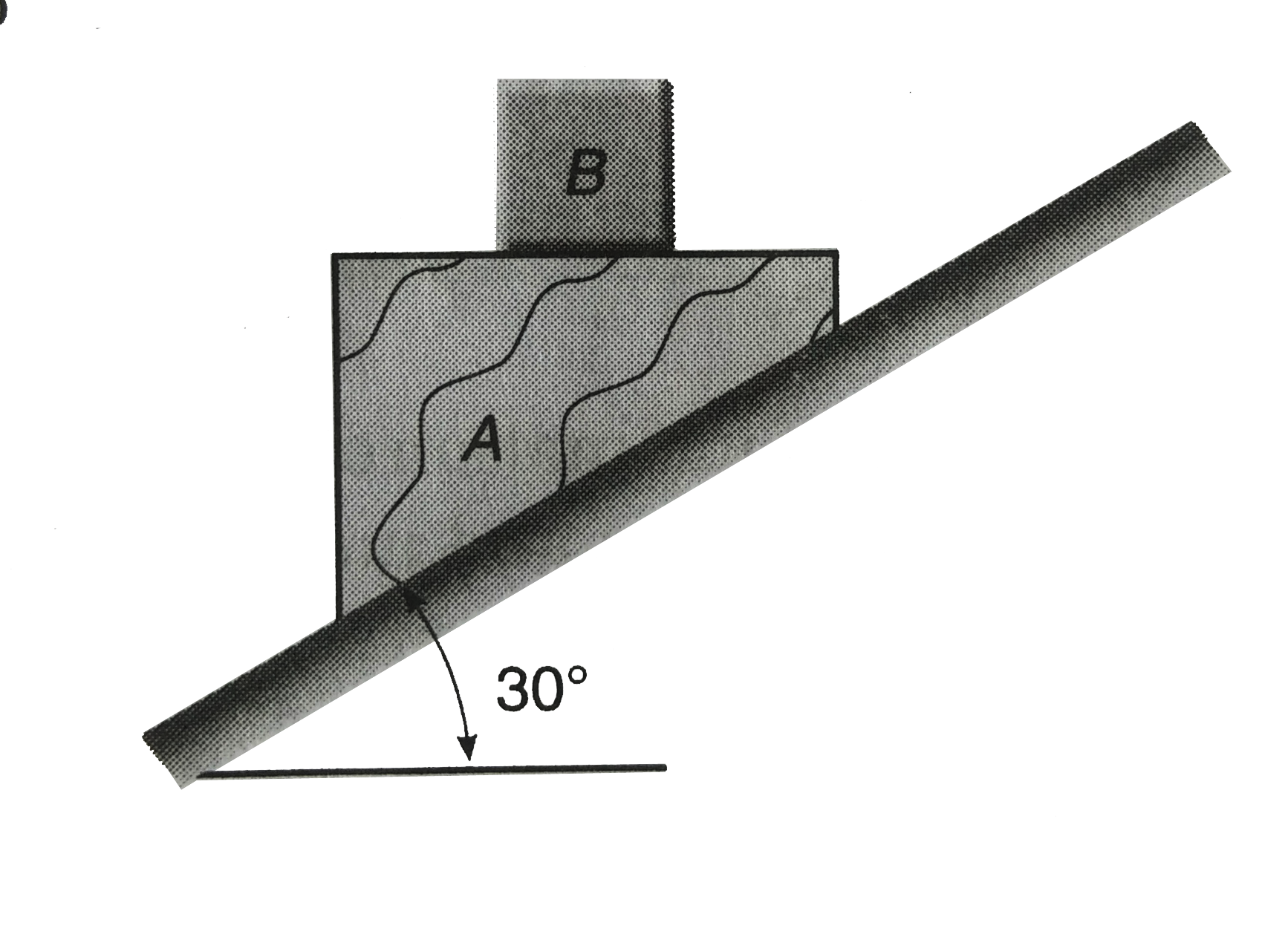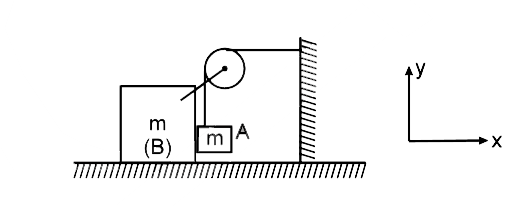A 6kg block B rests as shown on the upper surface of a 15kg wedge A . Neglecting friction , determine immadiately after the system is released from rest (a) the acceleration of A (b) the acceleration of B relative to A (take g=10m/s2)

Block B will fall vertically downwards and A along the plane.
Writing the equations of motion .
For block B
mBg−N=mBaB
or 60−N=6aB
(N+mAg)sin30∘=mAaA
or (N+150)=30aA ...(ii)
Further aBaAsin30∘
or aA=2aB ...(iii)
Solving these three equations , we get
(a) aA=6.36m/s2
(b) aBA=aAcos30∘=5.5m/s2
Topper's Solved these Questions
- LAWS OF MOTIONBOOK - DC PANDEYCHAPTER - LAWS OF MOTIONEXERCISE - example
86 Videos
- LAWS OF MOTIONBOOK - DC PANDEYCHAPTER - LAWS OF MOTIONEXERCISE - Check point 5.1
20 Videos
- LAWS OF MOTIONBOOK - DC PANDEYCHAPTER - LAWS OF MOTIONEXERCISE - Comprehension
9 Videos
- KINEMATICS 1BOOK - DC PANDEYCHAPTER - KINEMATICS 1EXERCISE - INTEGER_TYPE
15 Videos
- LAWS OF THERMODYNAMICSBOOK - DC PANDEYCHAPTER - LAWS OF THERMODYNAMICSEXERCISE - Level 2 Subjective
18 Videos
Similar Questions
Knowledge Check
In the system shown block is released from rest on the inclined surface of the wedge. The acceleration of the wedge will be (assume friction to be absent)
 Ag5Bg4Cg3Dg2
Ag5Bg4Cg3Dg2In the system shown in fig., mA=4m, mB=3m, and mc=8m. Friction is absent everywhere. String is inextensible and light. If the system is released from rest, then

Acceleration of block C isA1/4ms−2B2/7ms−2C5/4ms−2D1/3ms−2In the system shown in fig., mA=4m, mB=3m, and mc=8m. Friction is absent everywhere. String is inextensible and light. If the system is released from rest, then

Acceleration of Block B isA20ms−2B5ms−2C15ms−2D10ms−2
Figure-2.54 shows a block of mass m is placed on an inclined wedge of mass M If the system is released from rest find the acceleration of m and M.

View SolutionThe block B starts from rest and slides on the wedge A which can move on a horizontal surface, Neglecting friction, determine (a) the acceleration of wedge, (b) the acceleration of the block relative to the wedge.

View SolutionA 20kg block B is suspended from a cord attached to a 40kg cart A. The ratio of the acceleration of the cart in cases (i) & (ii) shown in figure immediately after the system is released from rest is _________ . (neglect friction)
 .
.
View SolutionThe acceleration of 3 kg block in the arrangement shown in the diagram ,when the given system is released from rest is

View SolutionTwo blocks of masses 5kg and 10kg are attached with the help of light string and placed on a rough incline as shown in the figure. Coefficients of friction are as marked in the figure. The system is released from rest. Determine the acceleration of the two blocks.

View Solution

